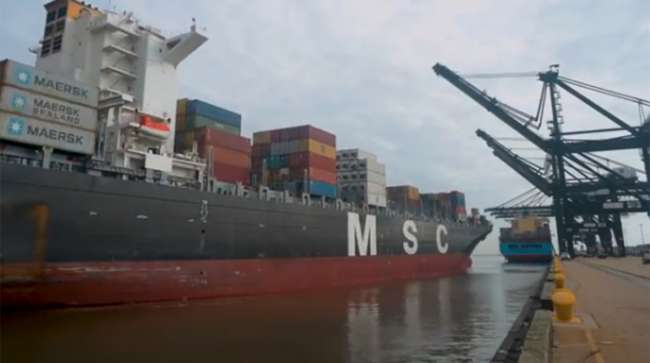Port Houston Sets Record for Container Volume in 2017

Port Houston broke its record for traffic in a year due to strength in the transportation of steel, wind energy equipment and automobiles, according to the port authority, which also is confident the numbers will grow with the plastin resin boom in the Gulf Coast.
Longshoremen processed more than 2.46 million industry-standard twenty-foot-equivalent units , or TEUs, in 2017, a 13% increase compared with 2016.
The results included a 22% increase in loaded import containers from East Asia, resulting in a nearly 50-50 balance on import-exports for the year. The port handled more than 3.7 million tons of steel.
Houston's port is growing! In 2017, Port Houston handled 2.46 million container TEUs - a 13% increase from 2016.
— Port Houston (@Port_Houston) January 31, 2018
In the upcoming year, Port Houston Executive Director Roger Guenther told harbor commissioners that the port is poised to capitalize on the surging demand in plastic resins, a byproduct of the natural gas boon in West Texas. The Port of Houston, though, is not alone in courting the valuable export commodity.
Port of Long Beach Executive Director Mario Cordero publicly identified the commodity as a key market opportunity if it can persuade manufacturers to ship resins in the large stash of empty containers in Dallas. The ports of New Orleans, Savannah, Ga., and Charleston, S.C., also have targeted the resins as a new business opportunity.

Guenther
Guenther highlighted other accomplishments to the commissioners in 2017, including improved reliability of 22 ship-to-shore cranes, extending gate hours for truckers and a new Foreign Trade Zone, where imports and exports are stored and inspected at a facility outside the port.
At the Bayport Container Terminal, a project was completed to add new gantry cranes at a container yard in 2017. At the Barbours Cut terminal, rehabilitation work was completed at one of the wharfs, and three bigger ship-to-shore cranes arrived in Houston to quickly handle Neopanamax vessels visting the Gulf.

